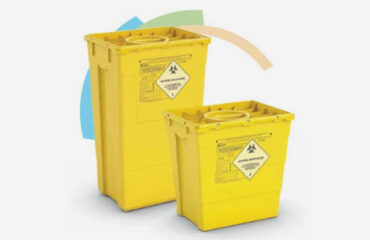What Does Reclaim Waste Mean?
Table of ContentsExamine This Report on Reclaim WasteThe Greatest Guide To Reclaim WasteThe Only Guide for Reclaim WasteThe Basic Principles Of Reclaim Waste How Reclaim Waste can Save You Time, Stress, and Money.
Domestic sewage waste refers to the waste and products from a domestic septic container. The appropriate administration and disposal of domestic sewer waste need liquid waste to be moved to a sewer treatment plant where the appropriate methods and tools are used to cleanse and dispose of waste.
Industrial waste often includes possible risks, such as flammable products or a combination of fluid and solid waste products, and requires a more advanced and detailed disposal procedure. The disposal of commercial waste normally entails the purification of waste prior to transportation to make certain risk-free and appropriate disposal. Hazardous waste is created from byproducts and overflow of commercial processes and production.
This type of waste can not make use of the exact same sewer monitoring transportation or procedures as septic or commercial fluids. The hazardous waste management process requires the examination and screening of liquid waste before it undertakes the disposal process (industrial wastewater treatment). Runoff waste is the fluid waste that originates from drainage and excess stormwater in extremely populated locations or cities
Drainage waste can trigger contamination and flooding if not taken care of appropriately. Find out more concerning drain cleaning and waste monitoring. Making certain appropriate waste monitoring can stop disasters and minimize ecological damage. Both people in residential settings and experts in industrial or production industries can take advantage of recognizing the procedures and policies of liquid waste administration.
Get This Report on Reclaim Waste
Contact PROS Services today to find out about our waste administration and disposal solutions and the proper means to take care of the liquid waste you generate.
(https://www.tumblr.com/reclaimwaste1/766851148823068673/at-reclaim-waste-were-a-national-solutions?source=share)This supposed 'wastewater' is not just a vital source however, after therapy, will certainly be released to our land, rivers or the ocean. Made use of water from bathrooms, showers, baths, kitchen area sinks, washings and commercial procedures is understood as wastewater.

water utilized to cool down equipment or tidy plant and devices). Stormwater, a type of wastewater, is drainage that streams from agricultural and urban locations such as roofings, parks, gardens, roadways, paths and rain gutters into stormwater drains, after rain. Stormwater flows unattended directly to neighborhood creeks or rivers, at some point getting to the sea.
The 7-Second Trick For Reclaim Waste
In Queensland, a lot of wastewater is treated at sewage therapy plants. Wastewater is moved from residential or industrial websites through a system of sewage systems and pump stations, referred to as sewerage reticulation, to a sewage therapy plant. City governments develop, maintain and operate most sewage therapy plants. Operators are accredited under the Environmental Protection Act 1994 to release treated wastewater at an appropriate ecological requirement into rivers.
The Division of Natural Resources encourages local federal governments about handling, operating and maintaining sewerage systems and therapy plants. In unsewered areas, regional governments might call for homeowners to install individual or home sewer treatment systems to treat residential wastewater from bathrooms, cooking areas, shower rooms and laundries. The Department of Natural Resources authorizes using household systems when they are proven to be reliable.
The majority of stormwater receives no treatment. In some brand-new read this article subdivisions, therapy of some stormwater to remove clutter, sand and gravel has started making use of gross contaminant catches. Wastewater treatment takes place in four stages: Eliminates strong matter. Bigger solids, such as plastics and various other objects wrongly discharged to sewers, are removed when wastewater is travelled through displays.
Wastewater after that moves right into large containers where solids resolve and are removed as sludge. Oil and residue are skimmed from the surface. Uses tiny living organisms called micro-organisms to damage down and remove staying dissolved wastes and fine particles. Micro-organisms and wastes are included in the sludge. Removes nitrogen and phosphorus nutrients that might create algal blossoms in our rivers and threaten water life.
9 Easy Facts About Reclaim Waste Explained
Nutrient elimination is not readily available at all sewer therapy plants because it needs expensive specialized tools. Clear liquid effluent generated after treatment might still consist of disease-causing micro-organisms - liquid waste removal melbourne.

The majority of wastewater moves into the sewage system. Under the Act, local governments carry out approvals and permits for environmentally relevant activities (Periods) involving wastewater launches that may have a local influence.
How Reclaim Waste can Save You Time, Stress, and Money.
Otherwise, samples are considered research laboratory analysis. Commonly many tests are needed to establish the degrees of each of the different contaminants such as oils, hefty steels and pesticides in water. Tracking supplies accurate info about water top quality and can confirm that permit problems are being fulfilled. The details obtained with monitoring provides the basis for making water quality choices.